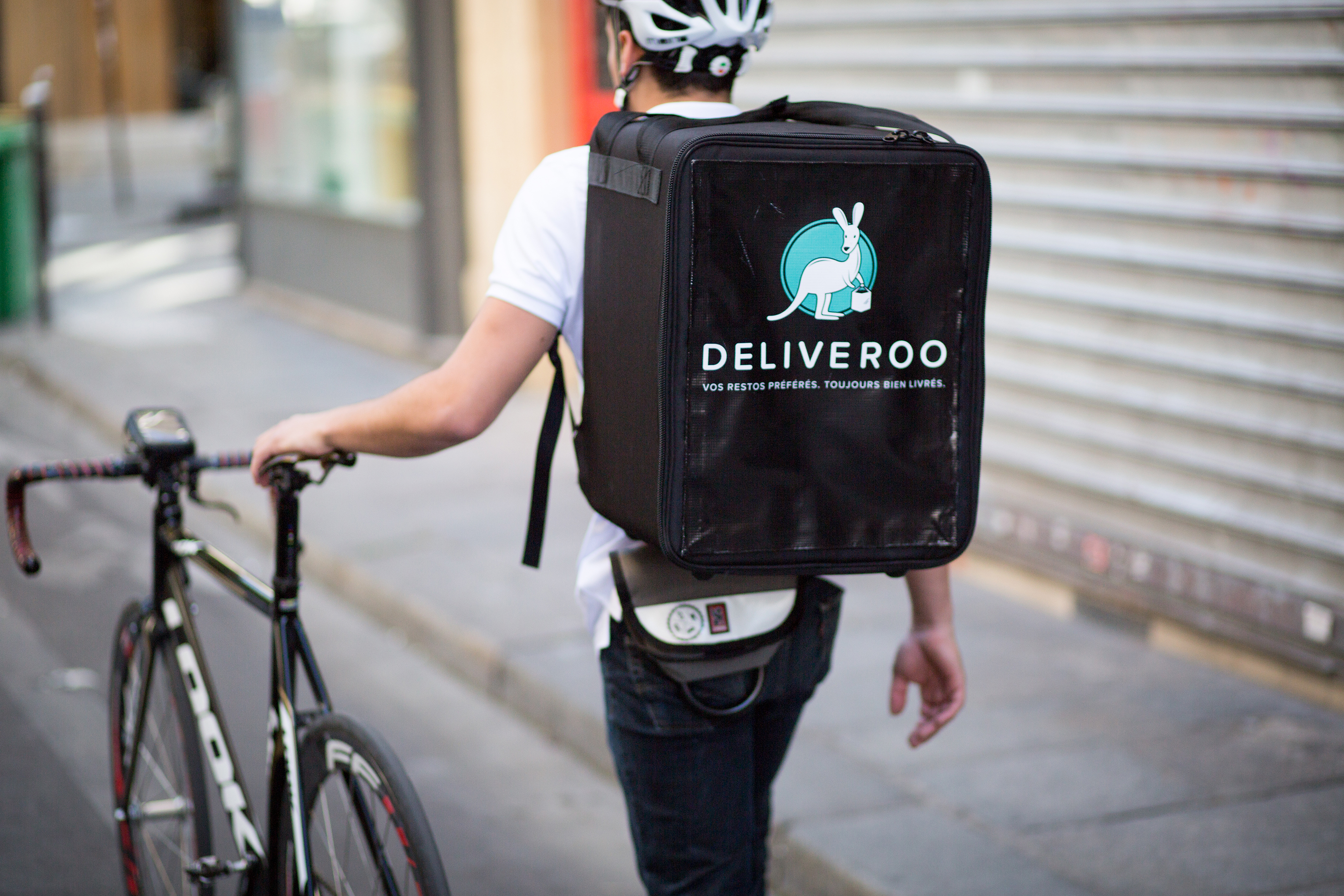The business world has traditionally functioned on the principal of companies producing products or providing specific services. In recent years, however, the development of the Internet and the proliferation of smart-phone and mobile device technology has established a new business model which is not based on supply and demand in the traditional sense, but rather on finding innovative and mutually beneficial ways of connecting existing businesses and sellers to a wide consumer base. Following a model established by eBay, exciting new high-growth companies like Hailo, Uber, Spotify, Deliveroo and Airbnb are making money hand-over-foot by bringing people together and generating mutually beneficial relationships rather than producing traditional goods or services themselves. In this article we are going to look at the rise of the sharing economy, and the ways it is changing how business is done across a variety of different industries.
Disruptors and Innovators
Also known as shareconomy or collaborative consumption, the sharing economy refers to a complex series of changes which have occurred in the business world since the early 2000s, largely as a result of the emergence of peer-to-peer sharing networks on the Internet. The challenge presented to the traditional business world by these new technologies was that commodities, which in the past needed to be bought and owned as physical objects, could now be shared online as downloadable information. The classic example of how peer-to-peer networks completely disrupted a traditional marketplace is provided by the music industry.
Born in 1979, Sean Parker was the son of a TV advertiser and a US government oceanographer. When he was seven, his father taught him how to programme on an ATARI 800. By his teens, Parker was a proficient hacker, and narrowly avoided jail time at age sixteen when the FBI tracked him hacking into the network of a Fortune 500 Company. In 1999, Parker and his friend Shawn Fanning created Napster, a peer-to-peer file-sharing network which allowed users to share music encoded in MP3 format.
A year later, the founders of Napster checked how many people world-wide were using their platform and discovered that it was a whopping 20 million. The effects of Napster, and the various filesharing platforms that followed, on the music industry cannot be underestimated. Previously, music could only be shared physically by people who knew each other directly; now total strangers would share their entire record collections online.
File-sharing precipitated the first major dip in global music sales, it terrified record labels, and lead to a series of prolonged legal battles. Napster was shut down in July, 2001, but by then the genie was well out of the bottle: music would never be consumed in quite the same way again.
This illustrates the classic pattern that the sharing economy has taken: a new technology completely disrupts an existing marketplace, and eventually innovators establish new ways to re integrate the sharing technologies back into the market-place. The Swedish music streaming platform Spotify is an example of how file-sharing has been re-integrated into a profit-making business model.
What Spotify does is to acknowledge that 21st century people are used to having access to vast stores of music for free. To make this reality profitable, the company offers a two-tiered, “fremium” service to its customers. At a free rate, customers can access the music, but with lower quality audio and obtrusive advertising. However, by upgrading to Premium, customers are able to remove the advertising, improve audio quality, and download songs for listening to on other devices.
As of June 2015, Spotify had 75 million users, with 20 million paying Premium customers. The combination of advertising and paying Premium customers allows the company to pay record companies, and stay within digital rights management law.
Connecting the Dots: Activating Potential Business Networks
As the examples of Napster and Spotify illustrate, business in the 21th century is becoming more and more defined by how the internet allows people to share all kinds of things, and mobile app technologies are making consumers increasingly smart about maximising their buying power in the market-place. What began as new technologies disrupting traditional business models has developed into businesses developing increasingly innovative strategies to tap into the ‘net’s inherent capacity for generating relationships of synergy: connecting people to people in mutually beneficial ways, and providing consumers with instant, valuable market information. Ebay provides a good example of an early success story in the shared economy.
Today a multi-billion dollar multinational corporation, and one of the most recognisable successes of the dot-com bubble of the 90s, eBay started out as a hobby for Iranian-American computer programmer Pierre Omidyar. Omidyar set up the AuctionWeb on his personal website. One of the first items which was sold on AuctionWeb was a broken laser pointer for $14.83.
When Omidyar checked with the buyer to see if he understood that the pointer was broken, the buyer explained that he was a collector of broken laser pointers! Omidyar didn’t regard the enterprise as a business proper until he was forced by his internet provider to upgrade to a business account due to the high volume of traffic on the site. Omidyar started charging people to use AuctionWeb to meet the increased cost, and the eBay success story started from there. What is interesting about eBay is that it is really a facilitator rather than a conventional provider of services. Ebay provides a location and a user-friendly platform where its various clients provide the products and conduct the sales themselves.
Ebay’s greatest achievement, as in many sharing economy businesses, was to harness a whole network of potential business and commerce that merely needed to be connected in a convenient way. In any market-place there is always an abundance of potential commercial activity that isn’t happening because nobody has found the right way to connect the various dots; the challenge of the shareconomy is to do precisely this.
In the past few years, some of the most exciting, rapid-growth global companies have all utilized similar strategies, opening up business networks across every sector: accommodation (Airbnb), transport ( Hailo, Uber), and food (Just Eat, Deliveroo), These companies are quickly altering businesses operate.
A service like Deliveroo allows restaurants to operate takeaway services by simply providing the food; eBay allows regular consumers to be retailers, and Airbnb allows average property owners to operate as landlords for short periods of time. Real-time and on-demand phone apps make consumers more aware of the choices which are available to them. We will now look at some of the success stories and up-and-comers of the shareconomy.
Airbnb
Like eBay, Airbnb started out from very humble beginnings. Founders Brian Chesky and Joe Gebbia were college friends who had once vowed, idly enough, to form a business someday. Chesky got a call out of the blue from Gebbia years later to say he had a room available In his San Francisco apartment. Impulsively, Chesky quit his job, threw a foam mattress in his car, and drove to San Francisco. There was only one problem: they couldn’t afford to pay the rent! That weekend the Industrial Design Conference was being held by the Designers Society of America nearby. Noting that all the local hotels were booked out, Chesky hit on the novel idea of turning their apartment in a temporary bed and breakfast. The pair managed to accommodate three guest on their living room on air-mattresses, making $1, 000 dollars in the process.
What was more interesting was the feedback they got back. Rather than viewing the pair’s make shift B&B as a necessary evil, guests enjoyed the low-cost, friendly and down to earth atmosphere provided. In February 2008, Chesky and Gebbia were joined by architect Nathan Blecharczyk to form a company proper called AirBed and Breakfast. Initially, the company focused on capitalizing on high-profile events where accommodation was scarce, but gradually the company began to move into more general accommodation. While the company was expanding rapidly, and still being operated from their San Francisco apartment, Chesky was pushed out of his bedroom, and used only Airbnb accommodation himself for a year.
Today Airbnb is a massive global success, with over 1, 500, 000 listings in 34, 000 cities and 190 countries. Like eBay, Airbnb is primarily a facilitator of existing potential business networks. It provides a platform where people who want to rent out their properties on a short-term basis are connected to potential customers. Prior to the existence of Airbnb, many of these casual landlords would never have taken the plunge because a convenient method of doing so simply didn’t exist.
For the consumer, it opened up new avenues of choice and affordability in terms of accommodation. This is the key to success in a shareconomy model: spotting a synergy, a mutually beneficial network of relationships, that only needed the platform to bring them together.
Deliveroo
Traditionally, food delivery was a limited market which offered only minimal choice to the consumer. The restaurant itself had to run its own delivery service, and the online world only impacted the market in terms of advertising existing delivery services. This meant that the quality and diversity available to order home was sorely limited, with fast food pizza chains and Chinese restaurants dominating the market.
The innovation of Deliveroo was to do all the delivery and marketing themselves, thereby offering the opportunity to restaurants that don’t traditionally deliver to get into that market with minimal investment. All they have to do is provide the food.
Initially established in 2012, Deliveroo’s dramatic success in London made it a hot property in the fiercely competitive world of VC funding (VC, or Venture Capital, funding is early seed money provided to new, innovative, and potentially high growth companies; the start-up money is usually in exchange for equity in the companies.) In January of last year, the company received $25 million in funding from VC companies Index, Hummingbird, and Hoxton Ventures; this was followed in July by a further $70, and in November it announced that DST Global and Greenoaks Capital were adding a further $100 million, bringing their total funding haul to a whopping $200 million.
Deliveroo had it’s official Irish launch in Dublin in April of last year, and has since expanded to Cork and Galway. The company now has operations in Ireland, the UK, the Netherlands, France, Germany, Belgium, Spain, Italy, Dubai, Australia, Singapore, and Hong Kong. It is a classic example of spotting a distinct gap in the market – diverse, high-quality, home-delivered food –and applying networked, smart-phone technology to address the problem. To use Deliveroo, you simply have to enter your postcode into the homepage, and the site will then show you all the participating restaurants in your area. Payments are made by card, and the company promises an average delivery time of just 32 minutes. Deliveroo also has a iOS app available for free from the App Store.
Laundrie
Laundrie is a new app which is designed to cater to busy urban professionals who find themselves lacking sufficient time to race down to the dry-cleaners, nevermind filling up the washing machine the old-fashioned way. Customers using Laudrie can simply click the items they want washed using the app, and a collection van will arrive shorty, with a guarantee that the clothes will be delivered back fresh and folded within 48 hours.
Laundrie is the brain-child of Evan Gray, an Irish entrepreneur who had previously worked in corporate finances for Dell. “The current model of a retail location on the high street with a fragmented owner-operator base across the country is greatly improved upon by Laundrie from a consumer and an operator point of view,” Gray told technology news website Silicon Republic, “our operation provides convenience, scalability and competitive pricing, therefore benefiting both us and the consumer.”
Conclusion
The sharing economy is not without critics and controversies. Many have taken issue with the suitability of the term sharing in the first place. Writing for the Harvard Business Review, Gianna M. Eckhardt and Fleura Bardhi argued that access economy was a better term, since the “sharing” in question is market-mediated, ie undertaken for profit and facilitated by a profit-making company.
Others have argued that share economy companies, by breaking down the conventional relationship between service provider and consumer, are evading many of the responsibilitie that conventional service providers have to maintain in order to insure their future business relationships. Nevertheless, there is no doubt that this type of business model – one which spots existing potential business networks and synergistic relationships, and joins them together using user-friendly platforms and technologies – will only become more prevalent and influential in the business landscape in the years to come.













